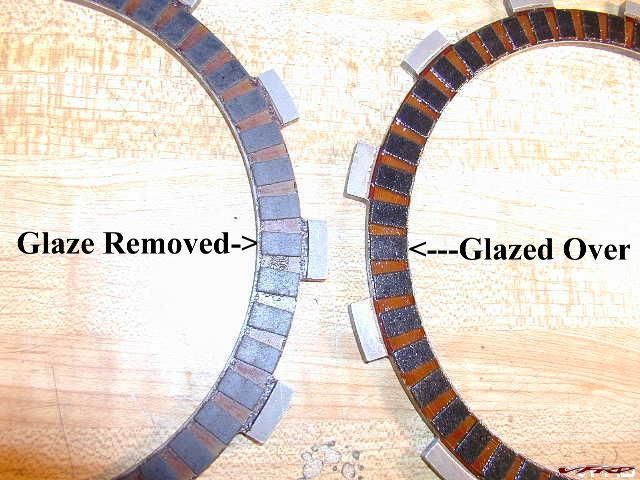I searched, and have used this oil in my bikes, but my stash has run out, and my bottles were dated from 2017 batch. If I buy brand new formula, would this still be JASO MA / MA2 and will this work with wet clutches?
- Home
- Forums
- Motorcycles, Boating, Small Engine, Aviation, Powe
- Motorcycles and Motorcycle Lubrication
You are using an out of date browser. It may not display this or other websites correctly.
You should upgrade or use an alternative browser.
You should upgrade or use an alternative browser.
2024 Current Formula Shell Rotella T4 15W-40 still ok to use?
- Thread starter Fordiesel69
- Start date
What does it say on the later container? The PDS on the Shell website says:
JASO DH-2, MA/MA 2
Fordiesel69
Thread starter
Have not purchased yet, hence the question.
https://shell-livedocs.com/data/published/en-US/f949b711-e9a4-42c6-a76f-3114070e6289.pdfI searched, and have used this oil in my bikes, but my stash has run out, and my bottles were dated from 2017 batch. If I buy brand new formula, would this still be JASO MA / MA2 and will this work with wet clutches?
I would say it’s incumbent on you to look at the container prior to purchase, but as noted by me and others the PDS shows it.Have not purchased yet, hence the question.
Bud_One
Site Donor 2025
I'm currently using it in my Honda CTX700 , about 1k miles on it.. no issues.
I'm using the 2024 T4 15w40 in both of my two Honda VT750's. I changed the oil the beginning of June, so a little over a thousand miles on the oil in each bike. No problems here.
Edit... The T6 no longer carries the JASO MA letters on the jug, but has a picture of a motorcycle instead. The T4 15w40 still has the JASO MA letters, the T4 10w30 never had em. Both the T5 10W30 and 15w40 have the JASO MA letters now too. I run the T5 10w30 in my CB1100 with no problems as well.
Edit... The T6 no longer carries the JASO MA letters on the jug, but has a picture of a motorcycle instead. The T4 15w40 still has the JASO MA letters, the T4 10w30 never had em. Both the T5 10W30 and 15w40 have the JASO MA letters now too. I run the T5 10w30 in my CB1100 with no problems as well.
Last edited:
I have used T4 in the Same bike for 10 years. Used the old version, used the new version. I notice no difference.
What kind of bike?
What kind of bike?
I searched, and have used this oil in my bikes, but my stash has run out, and my bottles were dated from 2017 batch. If I buy brand new formula, would this still be JASO MA / MA2 and will this work with wet clutches?
We now know that the primary cause clutch slip are high mileage...
mileage is the constant among all of the clutches that begin to
slip... oil choice whether JASO approved or not is not a constant...
High mileage is the constant where all clutches begin to loose grip
due to normal glazing and contaminates that build up over use...

what is best way to to remove the glaze on fiber clutch plates,, 600 or 800 grit sandpaper on flat surface to lightly push and swirl them a bit..We now know that the primary cause clutch slip are high mileage...
mileage is the constant among all of the clutches that begin to
slip... oil choice whether JASO approved or not is not a constant...
High mileage is the constant where all clutches begin to loose grip
due to normal glazing and contaminates that build up over use...

Inspect the friction plates for glazing... make sure you have plentywhat is best way to to remove the glaze on fiber clutch plates,, 600 or 800 grit sandpaper on flat surface to lightly push and swirl them a bit..
of material to work with... your shop manual states clutch thickness
in thousands of an inch or mm...
First removed the contaminants with Acetone... pick a hard surface to lay
over a 600 grit black dry emery paper... rotate the clutch plate in a
circle... you're just busting the glaze... don't get carried away
remove too much material... You should end up with a friction plate
looks dull like a new one as opposed to a shinny glazed one... recheck
thickness...

Next check the pressure plates for bluing caused by localized heat...
make sure they are not warped... consult the manual for a thickness
range... now removed the contaminants with Acetone and wire wheeled
them to erased the blue and also to generally scuff up the surface...
you should end up with a dull surface free of Blue marks...

Bike on its side is a simple way to shift the oil level to an angle in order to remove the clutch cover without spillage...
Have a new gasket standing by...


- Joined
- Apr 6, 2024
- Messages
- 36
Too many questions lately on that oil. I stopped using it and went to Super Tech 10w-40 Motorcycle oil. A bit more $$ but available close and great shifting in my 92 750 Nighthawk.
Similar threads
- Replies
- 16
- Views
- 2K
- Replies
- 11
- Views
- 433
- Replies
- 8
- Views
- 1K
- Replies
- 24
- Views
- 6K
